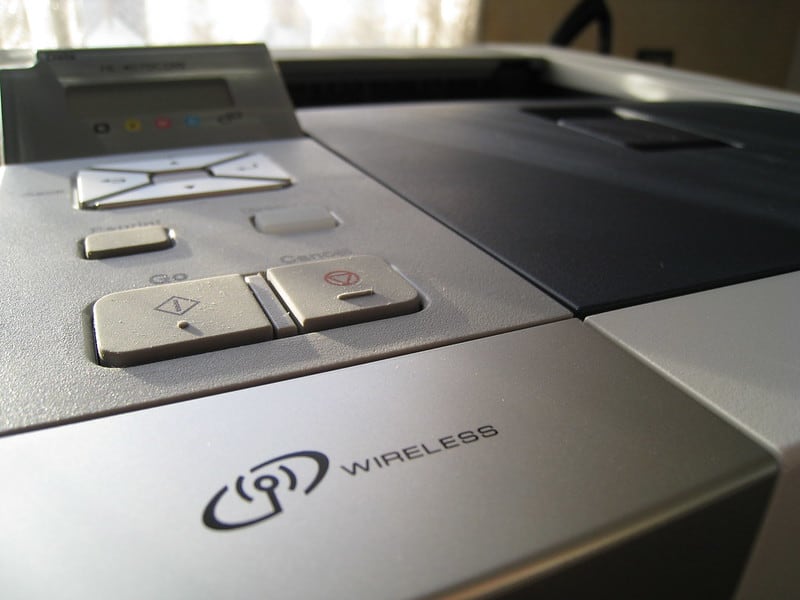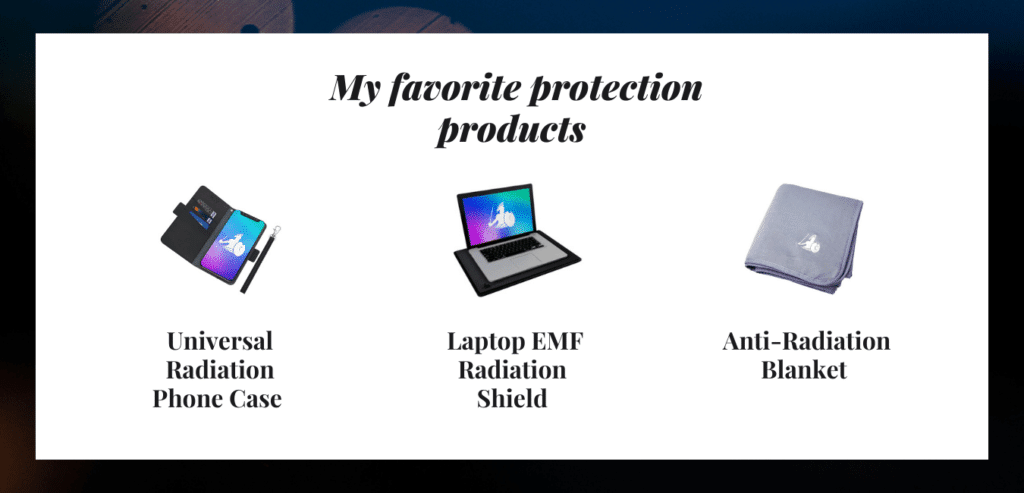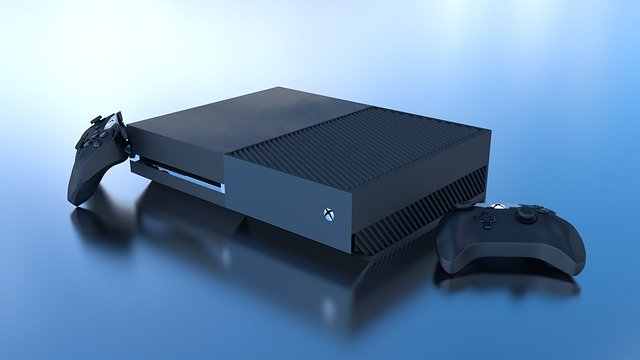
Do Wireless Printers Emit EMF Radiation? I have spent a lot of time to find the answers for you in this article.
Steve Jobs once famously said that,
wireless is the wave of the future. Time has proven him to be right.
Wireless technology has dominated every electronic domain and smart devices are all the rage. From smartphones to smart refrigerators, everything now is ‘smart’.
But what does this ‘smart’ really mean though?
In the most colloquial of senses, it means that the appliances are upgraded to be part of a common network and that they can communicate with other devices in the same network to create an ecosystem that helps you run your day more efficiently.
They are almost always connected either via Bluetooth or Wi-Fi and transfer data over the air to carry out essential functions.
The smartness of a device can be of varying degrees. For example, a smartphone can literally bring the whole world to your fingertips while a smart fridge is only limited to suggesting recipes for you and cooling your water (and juices) to a temperature of your choosing.
We like to have these smart devices around because they make life easy for us and we don’t have to spend time doing mundane things. Who wants to get up and turn off a light when you can just say a command and the light gets turned off automatically?
A very popular wireless innovation today is the wireless printer, which is what this article is dedicated to. They are awesome in every sense of the word – they don’t require you to plug in your computer, don’t need to be placed right next to your machine, and don’t really have a complicated setup process.
You just push a button, pair it with your computer and you’re good to go. When you need prints, just click on the print button and the printer takes care of it – all without wires.
If it seems to be too good to be true, it is. While the wireless printer has a lot of benefits to its name, it also has its downsides that not many talk about. If you’ve been a reader of this site, you know my feelings about wireless technology and the risk of EMF radiation.
The radiation generated from wireless printers is significant and may cause damage to us if we are not careful in protecting against it. So, let’s dive in.

| Universal radiation phone case | Check price here |
| Laptop EMF radiation shield | Check price here |
| Anti- Radiation blanket | Check price here |
History of Wireless printers
Printers have been around for a very long time and they have been one of the most important computer accessories since forever.
Printers enabled us to take the output from the computer and actually get a hard copy from it. When introduced, this was great because it enabled us to not only keep a copy of our work on the computer but also obtain a real paper copy that was portable and could be carried around.
This truly opened up the vista for computers to be used extensively in businesses and educational institutions.
However, printers are a result of very sophisticated innovation. A lot of fine engineering makes a print happen and only some who are privy to the workings of it can truly appreciate what a fine piece of art that is.
In any case, since the time we invented printers, we’ve strived to better it in terms of print quality, efficiency, and cost. I remember a time when a printer cartridge used to cost upwards of $50 and would only print a handful of prints before running out.
Today, an average cartridge costs around $10 to $15 and prints 80 to 100 prints. This massive reduction in cost whilst an increase in performance is attributed to the countless innovations we’ve done to come up with a solution that is viable for all of us.
Today, printing is super common whether you are in a city or a town. This reduction in cost and increased productivity has made it available to all folks regardless of their financial stature of geographical location.
The next big innovation in terms of printers is making them wireless. It makes sense on paper – people like printers so obviously people would love printers minus all the wires. And to be honest, no one really wants to deal with the wires in a printer.
There are just too many of them and each one has a specific connector and it’s just a headache. Therefore it is only natural that if you present the common folk with a printer and no wires, people would jump on it. And jump they did. Wireless printers became an instant hit as soon as they launched.
Workings of a wireless printer
The workings of a wireless printer are really simple. It’s not too different from a regular wired printer except for the wireless component of it.
Here’s how it works – you click on print, the file gets sent through the air to the wireless printer, and the printer prints it – easy enough, right?
Well, there’s a ton of things that happen behind the scenes to make the wireless printing happen. The first thing that happens is that as soon as you turn on the printer, it starts sending signals looking for a computer to connect to.
Your computer responds to the incoming signals and they become a pair. Becoming a pair simply means that they are now securely connected and can transfer data within the closed network.
After this step, your computer sends test data known as a ‘test packet’ to check if everything is alright. If things are fine, the printer now waits for you to send a file that it can print.
When I say it waits it’s not sitting idly by. Since it is completely wireless, the printer must keep checking at every instant if a file is getting delivered to it. The printer does so by sending pings to the computer.
A ping is a strong radiation pulse meant to check if it is still connected with the computer and can receive it. The computer acknowledges the ping by sending back a ping of its own that the printer intercepts. In this way they stay ready at all times to print.
As you might have guessed, the computer and printer generate hundreds of pings every minute in order to test the connection strength. So, even when they are idle, they are generating a load of radiation that is polluting your home environment.
Next, let’s assume you put something on to print. The computer will first encode the file and then send it in packets to the printer. The packets are sent by enclosing them within very high-frequency radiation that the printer receives and decrypts.
The printer has temporary memory storage that stores the file and then it proceeds to print it. Thus, as you might have noticed, when printing both the computer and printer generate very strong radiation that can be dangerous to our health if we are regularly exposed to it.
The dangers of radiation
Let me make something very clear – radiation isn’t life-threatening when exposed to for a little while. We’ve all experienced radiation at some levels before.
Getting an X-ray or visiting the doctor for an MRI – they all involve us being exposed to radiation. However, they do not have deadly consequences. This is primarily because of how little we get exposed to the radiation.
Our bodies can handle radiation in small doses. It is an incredible thing that our bodies can simply heal from within sans any conscious involvement from us.
That said, small doses of radiation regularly can quickly add up and overwhelm the body to the body that it is unable to heal properly or worse yet prevent a deadly disease from attacking our bodies.
Wireless printers usually generate EMF and RF radiation. EMF radiation is pretty standard for all electronic devices and doesn’t have a lot of risks associated with it.
However, RF radiation is high energy radiation that can pierce through physical obstacles and interact directly with our cellular functions. This is especially bad news since our skin and bones are unable to stop it from entering our bodies.
These radiations are high energy, meaning they have high frequencies. They also have high thermal thresholds. While they are mostly non-ionizing, meaning that their energies are not high enough to split atoms, the constant bombarding of such high energy frequencies on our cells puts the body in a lot of stress.
This can result in things like bad digestion and insomnia in the short run to contracting chronic conditions like diabetes and cardiovascular diseases in the long run.
has also been theorized that under such high pressure the body’s ability to self-replicate cells might be compromised, thus resulting in the creation of an imperfect cell that turns cancerous.
Because of the body’s lack of defenses, there is a chance that we might contract cancer as a direct result of exposing ourselves to these sorts of radiation.
Now I want to stress that there has been no evidence of that and at this point it is still a theory, however, tumors usually take 15 to 20 years in developing and we just had not had that kind of time elapse yet to make an informed judgment.
That said, if there is a possibility that exposing myself to these sorts of radiation can cause cancer (even if it is a theory at this point), that is just not a risk worth taking for me. In this next section, I focus on what you can do to reduce your exposure levels and thus your health risks. Read on.
Reducing the risk of radiation exposure
Normally my go-to move with anything wireless is to just throw it out and never look back. But I’m going to make an exception in this case.
That is simply because this is too good a gadget to be thrown out and just implementing some strategies can help you in reducing the risks enough to not make it a real factor in your life.
- Distance is your friend
Do not place the printer in the same room that you have your laptop. Place it in some other room, preferably one that is the least used. We want to isolate it from us as much as possible.
- Turn it on just before you need to print something
I see people turn on the printer right when they’re turning on the computer and never turning it off. It stays on for the whole time until they shut down the system in which case they also turn off the printer.
Please don’t be that guy. Keep it turned off right until the moment that you need something printed. When that time comes simply get up, turn it on, take your print, and promptly turn it back off.
- Have a time limit to how much you use the printer
It’s great if you just need to print something once in a while but if you are someone who constantly needs to print stuff or if you are in an office environment, consider switching to a wired printer. Seriously, the wires need to be assembled just once, and going through that is much easier than live with the possibility that your printer can give you a chronic disease.
My personal favorite EMF detection and protection products.
- DefenderShield EMF Radiation Protection Blanket – Ultimate protection from wireless radiation. The only EMF radiation protection blanket with multiple layers of shielding to block up to 100% of wireless (RF) radiation from cell phones, tablets, laptops, WiFi routers, and other electronic devices, and ambient emissions in the environment. Available on Amazon here.
- DefenderPad Laptop EMF Radiation Protection & Heat Shield. The DefenderPad is the ONLY laptop pad that uses multiple layers of shielding to block up to 100% of laptop EMF radiation (RF & ELF) while also greatly reducing heat! Get the latest price on Amazon here.
- DefenderShield Universal EMF Radiation Protection Pouch for Smartphones – EMF shielding to block up to 100% of wireless (RF) radiation. Most pouches only block a percentage of radiation emitted from your cell phone. Shielding is within the backside of the pouch to block signals and EMF emissions going towards the body, yet does not interfere with phone connectivity. Available on Amazon here.
- Copper Fabric Blocking RFID/RF-Reduce EMF/EMI Protection Conductive Fabric for Smart Meters – Very easy to cut and sew. Usage for Bags, Curtains, Tents, etc. Effective Shielding for CellTowers, Microwave Signals, Phones, and Smart Meters. Find it on Amazon here.
- TriField EMF Meter Model TF2. is an AC gaussmeter, AC electric field meter, and radio power density meter in a single unit, that combines all the features needed for fast, accurate measurements of electromagnetic fields (EMF). Best price on Amazon here.
Related questions
Should I buy a wired printer or a wireless one?
Wired. Always buy wired. Sure, the wireless ones are super enticing but as I’ve pointed out in this article, they come with significant health risks that I don’t think you should put yourself through just to have your prints done via Bluetooth. So, my advice to you will be to buy a wired printer.


